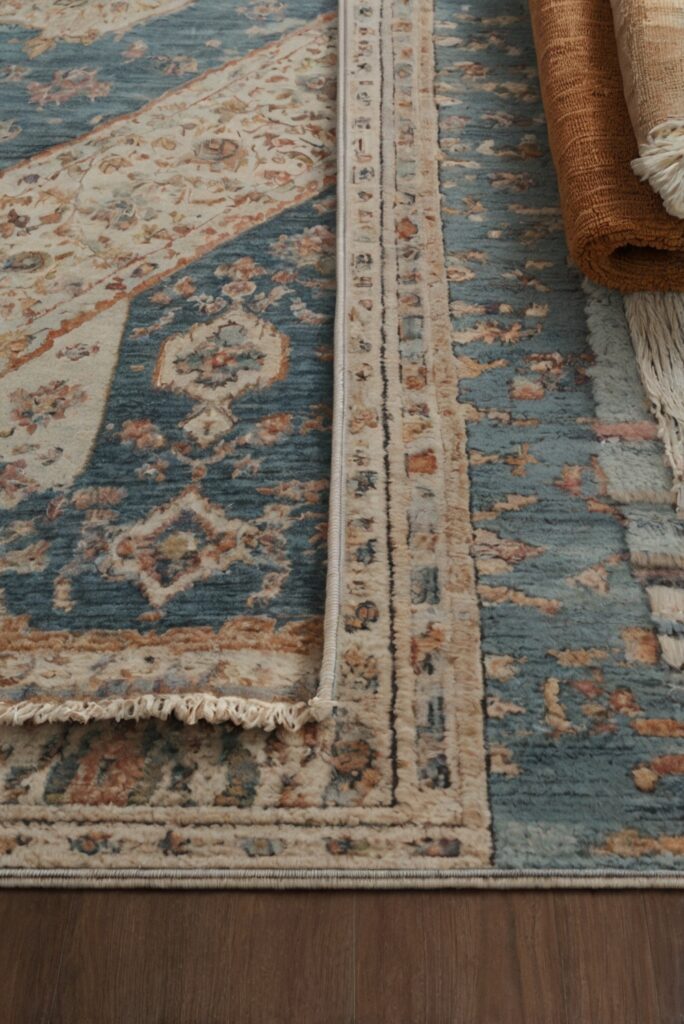Discover a daily interior designer routine for incorporating layered rugs in your living room design. Elevate your space with versatile textures and patterns for a cozy ambiance.
**How to Incorporate Layered Rugs in Your Living Room Design?**
Layered rugs can add depth and texture to your living room design. To incorporate them, start by choosing a base rug that is larger and more neutral in color. Then, layer a smaller rug on top that complements the base rug in terms of color and texture. Make sure to vary the sizes and shapes of the rugs for a more interesting look.
To avoid a cluttered appearance, stick to rugs that work well together and are not too busy or conflicting. Layered rugs can also help define different areas within a room, such as a seating area or a reading nook.
Consider using rugs with different pile heights to create contrast and visual interest. This technique works particularly well in open-concept spaces where you want to delineate separate areas without using walls or dividers.
When layering rugs, be mindful of safety concerns, such as tripping hazards. Secure the rugs in place with rug tape or non-slip pads to prevent accidents. Additionally, regularly vacuum and clean the rugs to maintain their appearance and prolong their lifespan.
Incorporating layered rugs into your living room design can elevate the overall aesthetic and create a cozy atmosphere. Experiment with different rug combinations to find the perfect look for your space.
Layered Rugs in Your Living Room Design
Layered rugs can add depth, texture, and visual interest to your living room design. They can also help define different areas within the room and create a cozy and inviting atmosphere. Here are some tips on how to incorporate layered rugs in your living room:
Choose the Right Size Rugs
When layering rugs, it is essential to select the right sizes to ensure a balanced and cohesive look. The bottom rug should be larger and anchor the space, while the top rug can be smaller and used to add color or pattern. Make sure both rugs are large enough to accommodate the furniture in the seating area.
Play with Textures
Layering rugs of different textures can add dimension and warmth to your living room design. Consider mixing a plush, soft rug with a natural fiber rug for contrast. The combination of textures can create a visually appealing and dynamic look in the room.
Consider Color and Pattern
When layering rugs, think about how the colors and patterns will complement each other and the overall aesthetic of the room. You can opt for a neutral bottom rug and a bold, patterned top rug for a statement look, or keep both rugs in a similar color palette for a more subtle effect.
Placement
When layering rugs in your living room, consider where you want to place them. You can layer rugs under the coffee table, under the seating area, or even under a console table to define different zones within the room. Experiment with different placements to find the best arrangement for your space.
Layering Technique
There are different ways to layer rugs in your living room design. You can place a smaller rug on top of a larger rug, partially overlapping them for a layered effect. Another option is to layer rugs at an angle to create a more dynamic look. Play around with different techniques to find the style that works best for your space.
What are the benefits of incorporating layered rugs in your living room design?
Layered rugs add depth and texture to your living room, creating a cozy and inviting space. They can define separate areas within an open-concept room and help tie together different design elements. By layering rugs, you can easily change the look of your room without investing in new furniture. Additionally, layered rugs can provide extra comfort underfoot and help absorb sound, making your living room more peaceful and serene.
What are some tips for successfully incorporating layered rugs in your living room?
When layering rugs, it’s essential to choose pieces that complement each other in terms of color, pattern, and texture. Start by selecting a larger rug as the base and then layer a smaller rug on top to create visual interest. Make sure the rugs have some common elements to create a cohesive look. You can also play with different shapes and sizes to add variety to your living room design.
How can you choose the right rugs for layering in your living room?
Consider the overall style of your living room when selecting rugs for layering. If you have a minimalist design, opt for rugs with simple patterns and neutral colors. In a more eclectic space, you can mix and match bold patterns and vibrant hues. Additionally, think about the function of the rugs – a plush rug can add warmth and comfort, while a flatweave rug is more practical for high-traffic areas.
What are some popular rug layering combinations for living rooms?
One popular combination is to layer a large jute or sisal rug with a smaller, more colorful rug on top. This contrast in texture and color adds visual interest to the room. Another option is to layer two rugs of different shapes, like a round rug on top of a rectangular one, to create a unique focal point. You can also mix different pile heights to add dimension to your living room design.
Can you provide a step-by-step guide for incorporating layered rugs in your living room?
1. Start by choosing a large base rug that fits the size of your seating area.
2. Select a smaller rug that complements the base rug in terms of color and pattern.
3. Place the smaller rug on top of the larger one, leaving a border of the base rug visible.
4. Play around with the placement of the rugs until you find a configuration that works for your space.
5. Add additional decor elements like throw pillows and blankets to tie the layered rugs into your overall design scheme.

